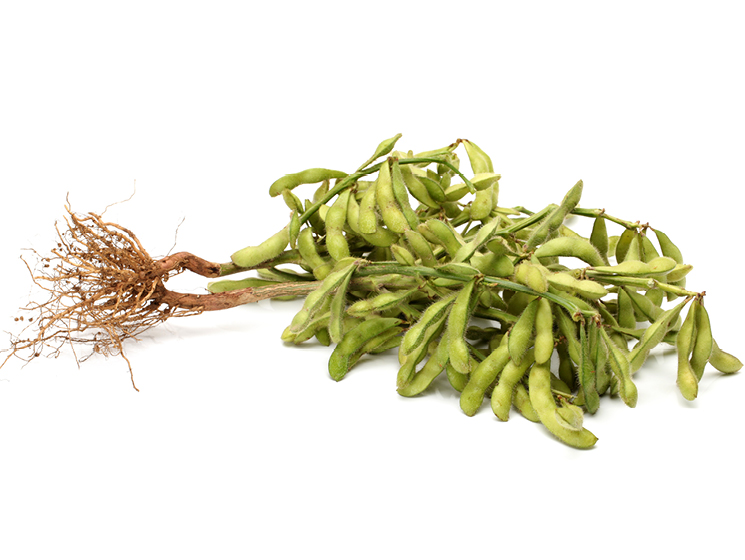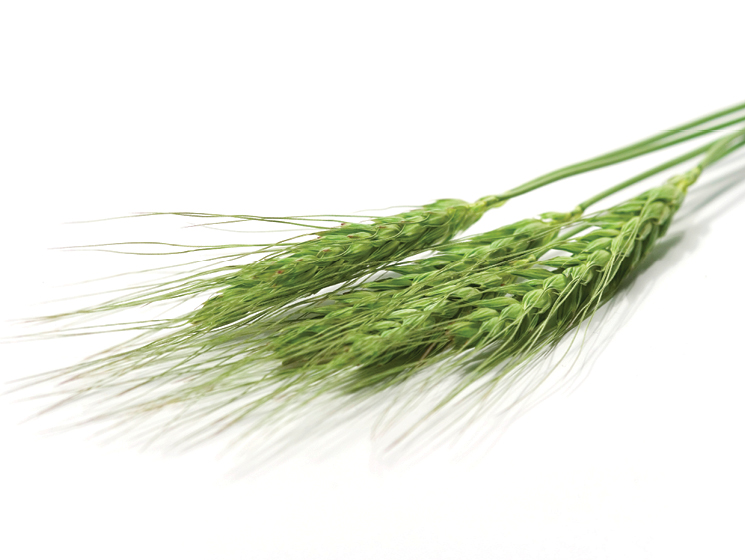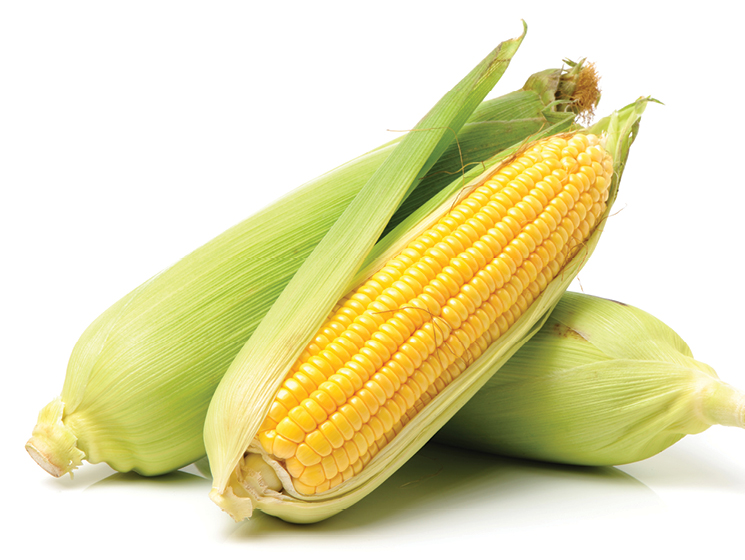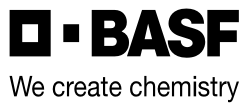Eragon Plus
Group 14
New Eragon® Plus makes pre-emerge burndown and pre-harvest dry down more convenient than ever. This all-in-one co-pack includes Merge® adjuvant, which enhances the efficacy of Eragon.
- Gets your crop off to the best start possible
- Quickly absorbed for fast control of key broadleaf weeds
- Group 14 chemistry controls tough weeds, including those resistant to glyphosate, triazine and Group 2 herbicides to complement and improve glyphosate application
One case contains:
- 1 x 1.182 L jug of Eragon LQ herbicide
- 2 x 8.1 L jugs of Merge adjuvant
Also available as a tote:
- 4 x 7.39 L jugs of Eragon LQ
- 1 x 405 L jug of Merge
Labels & SDS
6 AVAILABLE
Labels & SDS
HARVEST AID & DESICCANT
Crops

Canola

Soybeans

Wheat
- Dry beans
- Barley
- Triticale
Benefits
- Fast, complete dry down of dry beans and soybeans with reduced risk of regrowth
- Broad-spectrum activity and improved weed dry down
- Improved crop uniformity for a more efficient harvest
- Tank mixed with glyphosate for multiple modes of action in managing weeds resistant to glyphosate, triazine and Group 2 herbicides
- Tank mixed with glyphosate to control fall perennials for cleaner fields in the next crop
Application Tips
Pre-harvest
- Rainfastness – Eragon Plus is very rainfast and is limited by the formulation of glyphosate used.
Pre-harvest interval
- 2 days after application for dry beans and 3 days after application for all other labelled crops.
- 7 days after application if tank mixed with glyphosate.
When to Apply
| Crops | Staging |
|---|---|
Harvest aid and desiccant |
|
Canola (all types) |
Apply when 75% of seeds have changed colour. Canola timing for application cannot be determined by pod colour. Pods must be opened to determine the amount of seed colour change. Canola flowers upwards, so the lowermost pods will contain the first mature seeds, while the upper pods will contain the last maturing seeds. Seeds on the bottom 2/3 to 3/4 of the plant will have changed from green to dark brown or black in canola. |
Dry beans1 |
Apply when 90% of the pods have changed colour from green to yellow and/or light brown, 80 to 90% of original leaves have dropped and stems are green to brown in colour. Pods on the lower canopy mature first, so the few remaining green pods will be located in the top canopy. |
Soybeans |
Apply when 90% of the pods have changed colour, with lower pods essentially being all brown and the upper pods a yellowish-brown or gray in some varieties. At this point 80% of leaves should have dropped with the remaining leaves being yellow. |
Pre-harvest weed management |
|
Barley Triticale |
Hard dough stage with less than 30% moisture. A thumbnail impression remains on seed. |
Wheat (durum, spring, winter) |
With the peduncle colour change, the peduncle being the upper internode of the stem that carries the spike, look for the change from green to yellow as a good indicator of maturity. |
1 When tank mixed with glyphosate, consult glyphosate label or your BASF AgSolutions® Retail Representative for information regarding use on specific varieties of dry beans.
How Much to Apply
Pre-harvest
One case treats 20 to 40 acres. One tote treats 500 to 1,000 acres.
Eragon LQ |
30 to 59 ml/ac (73 to 146 ml/ha) |
Merge adjuvant |
400 to 800 ml/ac (1.0 to 2.0 L/ha) |
Water volume
| Ground application - harvest aid and pre-harvest weed control |
Minimum 80 L/ac |
Mixing order
- Fill clean spray tank 1/2 full of clean water and start agitation.
- Using a calibrated measuring device, add the correct amount of Eragon LQ. Continue to agitate.
- If tank mix is being applied, add the correct amount of glyphosate while continuing agitation.
- Add the correct amount of Merge to the tank last.
- Continue agitation while adding the remaining amount of water.
Follow Crop
Pre-harvest
In the first spring following a fall application2
- Barley
- Soybeans
- Canola
- Triticale
- Corn (field, sweet)
- Wheat (durum, spring, winter)
- Oats
In the second spring following a fall application
- All crops can be grown.
2 See label for additional crops.
Pre-plant/Pre-emergent Burndown
Crops

Corn

Soybeans

Wheat
- Barley
- Oats
Benefits
- Quickly absorbed for fast, complete weed control
- Complements and improves your glyphosate application
- Fast activity on key broadleaf weeds
- Group 14 chemistry controls weeds resistant to glyphosate, triazine and Group 2 herbicides
- Optimizes the in-crop herbicide-fungicide application timing in winter wheat
Performance Trials

Weed Management
| Pre-plant/pre-emergence | |
|---|---|
| Broadleafs | Maximum weeds staging |
| Broadleaf plantain3 | beginning of flowering |
| Canada fleabane4 | 20 leaf |
| Common ragweed4 | 8 leaf |
| Dandelion5 | 6 leaf |
| Giant ragweed3,4 | 8 leaf |
| Lady’s thumb3 | 6 leaf |
| Lamb’s quarters | 8 leaf |
| Perennial sow thistle3,6 | 8 leaf |
| Prickly lettuce3,7 | 9 leaf |
| Redroot pigweed | 8 leaf |
| Shepherd’s-purse3 | full flower |
| Stinkweed3 | full flower |
| Velvetleaf8 | 8 leaf |
| Wild buckwheat3 | 8 leaf |
| Wild mustard | 8 leaf |
3 Controlled with a tank mix of Eragon Plus and glyphosate for both pre-plant and pre-emergent applications.
4 Includes glyphosate-resistant biotypes.
5 Suppression only.
6 Top growth burndown control only.
7 Top growth only.
8 Pre-plant and pre-emergence applications in corn at 59 to 118 ml/ac.
Application Tips
Pre-plant/pre-emergence
- Rainfastness – Eragon Plus is very rainfast and is limited by the formulation of glyphosate used.
- Use a minimum water volume of 40 L/ac (10 gal/ac). If weeds are large or densities are high, use a water volume of 80 L/ac (20 gal/ac).
Pre-harvest interval
- 60 days for all pre-plant and pre-emergent applications.
- See label for forage, hay, silage and grazing restrictions.
When to Apply
| Pre-plant/pre-emergence | |
|---|---|
| Crops | Staging |
| Barley (winter, spring) | pre-plant, pre-emergence |
| Corn (field, sweet) | pre-plant, pre-emergence |
| Oats | pre-plant, pre-emergence |
| Soybeans | pre-plant, pre-emergence |
| Wheat (spring, winter, durum) | pre-plant, pre-emergence |
How Much to Apply
Pre-plant/pre-emergence
One case treats 20 to 40 acres. One tote treats 500 to 1,000 acres.
| Barley, Oats, Wheat | 30 to 59 ml/ac (73 to 146 ml/ha) |
Corn9 |
59 to 118 ml/ac (146 to 292 ml/ha) |
| Soybeans | 30 ml/ac (73 ml/ha)10 |
All applications
| Merge adjuvant |
400 ml/ac (1.0 L/ha) |
Glyphosate11 (360 g/L equivalent) |
1.0 L/ac (2.5 L/ha) |
Water volume
| Ground application |
40 to 80 L/ac (10 to 20 gal/ac) |
9 Eragon LQ can be applied without glyphosate and Merge as a pre-emergent application for corn.
10 Do not use rates higher than 30 ml/ac (73 ml/ha) or crop injury may result. Use with glyphosate for both pre-plant and pre-emergent applications.
11 Glyphosate is not included in the case.
Mixing order
- Fill clean spray tank 1/2 full of clean water and start agitation.
- Using a calibrated measuring device, add the correct amount of Eragon LQ. Continue to agitate.
- If tank mix is being applied, add the correct amount of glyphosate while continuing agitation.
- Add the correct amount of Merge to the tank last.
- Continue agitation while adding the remaining amount of water.
Follow Crop
Pre-plant/pre-emergence
In the next season following a spring pre-plant/pre-emergent application
- Barley
- Canola
- Corn (field, sweet)
- Dry beans
- Oats
- Soybeans
- Triticale
- Wheat (durum, spring, winter)
In the next season following a fall pre-plant/pre-emergent application
- Adzuki beans
- Barley
- Canola
- Corn (field, sweet)
- Oats
- Soybeans
- Triticale
- Wheat (durum, spring, winter)
See label for additional crops.


